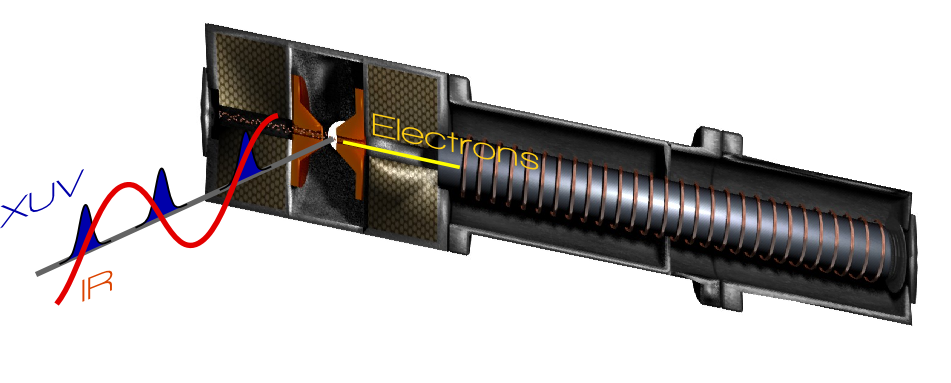Ultrafast phenomena occurring on time scales below a hundred picosecond (10-12 s) are usually followed using pump probe schemes. In this approach a first ultrashort light pulse triggers the phenomenon to be studied and a second ultrashort light pulse, arriving later at a given delay, "probes" the state of the system at this time. Repeating the protocol at varying delays finally yields a series of pictures of the process at different times after the triggering pump pulse, that may be assembled to give a movie with ultrashort time resolution. In practice the temporal resolution obtained is of the order of the longer of the two pulses used. This approach is very broadly used with femtosecond lasers to study nuclear rearrangements during elementary chemical processes (femtochemistry). To study even faster processes than nuclei movements, for instance electron clouds dynamics, one need even shorter light pulses, i.e attosecond pulses.
A strong fundamental limit rapidly appears when trying to generate attosecond light pulses. Indeed, the minimum duration of a laser pulse is linked to the width of its spectrum through the Cauchy-Schwarz inequality $\Delta E \Delta t \geq\hbar$ (see for instance lectures by Manuel Joffre). In practice, to get a 100 as long pulse one requires at least a 18 eV broad spectrum. This is way larger that the full visible spectrum, but compatible with standard HHG spectra. Indeed, upon synchronizing the harmonics from an HHG source, one naturally get an attosecond pulse. With our current driving lasers, which deliver pulse durations of 50 fs, the HHG process is repeated several time during the laser pulse. We thus get trains of attosecond pulses: about twenty pulses separated by half the period of the laser (1.3 fs), each pulse lasting 130-200 as.
To perform a pump-probe experiment, two such attosecond pulses should be available. In practice, the yield of HHG make this type of experiment extremely challenging though not impossible in specific case (see e.g. Tzallas et al. or Shimizu et al.)). Our approach, along with the largest fraction of the community is to use the gradient of the electric fields of the laser pulses instead of the full pulse as a second pulse. These gradients, for visible light vary over a fraction of the laser period, which is 2.7 fs with our usual Titanium: Sapphire laser. A lecture on HHG and attosecond pulses is available in Tutorial/lecture page.
